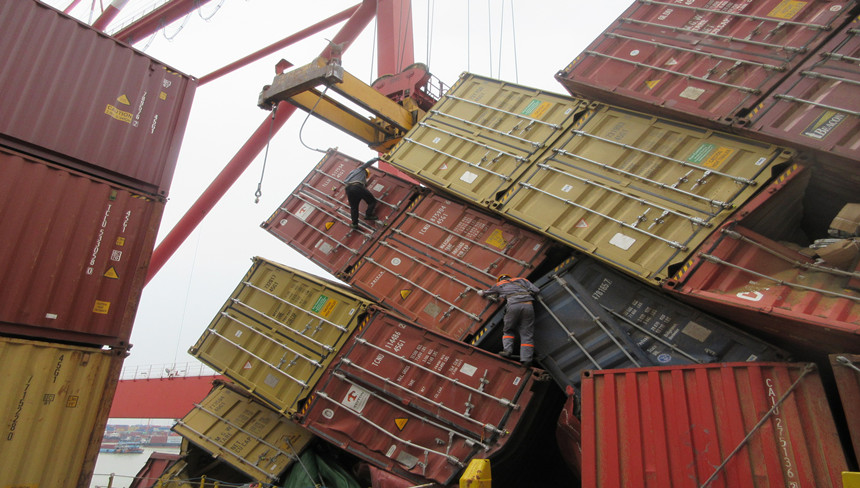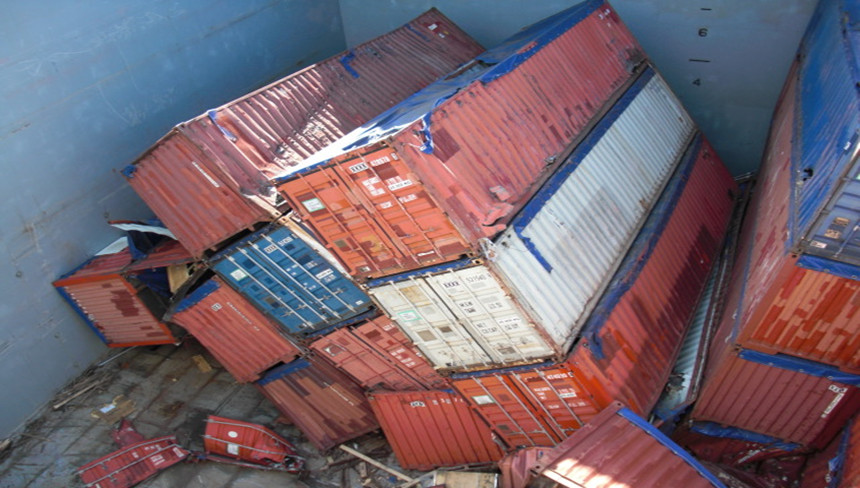LP 30/2021 More about Carriage of Containers on Bulk Carrier

As the cargo container shortage continues to grow, an increasing number of owners are piling in container shipping by altering the structure of bulk carriers or applying additional securing devices. While such operations have been highly profitable for owners, a potential way out is offered to the unusual predicament of global shipping. However, the new form of transportation has brought up questions about safety of ships and cargoes, especially about the risk of container stack collapses, and consequently, uncertainty in shipping insurance has emerged.
I. Potential risks
With risks persist in shipping and the ship being a high valued property insured, container collapses during the carriage of containers have been more frequent than uncommon and so are personal injuries, pollutions and property losses arising from such incidents. For bulk carriers, which are not designed specifically for the purpose of carrying containerised cargoes, there are prominently higher risks in ensuring the safe loading, carriage and discharge of cargoes, considering the differences in ship structure and cargo operation practices.
With respect to whether retrofitted bulk carriers can satisfy the insurer’s requirements on seaworthiness, owners should evaluate the structural strength of the ship and appropriate means to minimise risks so that the cover may not be prejudiced. Unless with further guidance from the authorities, owners intending to carry containers on bulk carriers are advised to conduct thorough assessment with prudence and due diligence.

Containers loaded inside bulk carrier cargo holds
II. Primary information
Below are some key aspects for Members to consider in meeting the technical requirements for carriage of containerised cargo.
1. The Class approved Cargo Securing Manual (CSM) shall incorporate detailed guidance for locations of stowage, types of approved securing equipment to be utilised and the manner of securing.
2. Flag verification of compliance with Navigation Bridge Visibility/SOLAS Ch. V Reg. 22, Vertical and Horizontal sectors of navigational lights (COLREG 72, Annex I/9 and Annex I/10).
3. Verify that carriage, stowage and securing of containers is in compliance with the appropriate sections of the CSS Code such as Annex I (Safe stowage and securing of containers on deck of ships which are not specially designed and fitted for the purpose of carrying containers). Where ships are not specifically designed and fitted for the carriage of containers on deck, the bills of lading for such cargoes should be appropriately claused to reflect the requirements of the Rules of the Association.
4. Details of cargo plan including location, types (Reefer, Dangerous goods, etc) and number of containers intended to load. Confirm stowage locations approved and suitable for the type of cargo container intended. For example:
- verify stowage and segregation as per Document of Compliance for Carriage of Dangerous Goods certificate (SOLAS Ch. II-2 Reg. 19);
- confirm Power supply arrangements for reefer containers.
5. Verify adequate inventory of certified and inspected cargo securing gear of appropriate MSL available in good condition.
6. Lashing equipment and fittings appropriate to the intended use, with safe access for regular tensioning throughout intended voyage.
7. Where dunnage is utilised:
- suitable to prevent sliding and movement of containers;
- suitable for load distribution / spreading;
- appropriate dimensions, to avoid susceptibility to compression with potential resultant slackening of lashings.
8. If temporary fittings are proposed to be installed/welded, ascertain details of their strength in relation to stowage and securing arrangements.
9. Consideration for Class approved welders to undertake welding work.
10. Is the loading computer approved and suitable to undertake the stability and lashing calculations for the cargo intended? If no, have class approved arrangements in place to verify the stability and lashing calculations.
11. Consider engaging an independent Marine Warranty Surveyor (MWS) for verifying and advising on acceptability of the stowage and securing plan and implementation of actual cargo loading and sea fastening/ securing.

Containers stack collapse inside cargo holds
III. Additional considerations
In addition to the above, Members should also consider the points below and have appropriate measures in place.
1. Actual implementation of the stowage and securing plan (not limited to the below aspects):
a. weight distribution (avoid heavy over light);
b. stack height and stack weight permissible;
c. use of stackers, twistlocks or similar devices, in addition to the lashings, for the intermediate tiers (prevent movement/sliding of boxes in intermediate and top tiers);
d. use of base-locks or similar devices (to prevent movement/sliding of boxes of the bottom tier);
e. use of bridge fittings or similar measures;
f. height of the stack and clearance from hatch cover/tween deck pontoon to:
- Avoid contact damage when opening closing hatch covers/tween deck pontoons;
- Avoid contact damage due cargo movement in adverse environmental conditions;
g. correct number and application of lashings per lashing ring/pad eyes or similar to prevent overloading of lashing components.
2. Weather and routeing to avoid adverse environmental conditions.
3. Freeboard and exposure of deck cargo to seas on deck and other environmental conditions such as wind and ice accretion.
4. Effects of vessels metacentric height (GM) and vessels motions on securing of the cargo and hatch covers/tween deck pontoons.
5. Effects of ship’s motions on containers themselves (such as lift-off, racking stresses).
6. Safe access to cargo:
- for monitoring and managing securing arrangements during loading and discharging, including fitting of twistlocks;
- can the discharge port accommodate and handle container discharge from a non-dedicated container carrying vessel;
- during voyage to check and adjust lashings etc with consideration to route, weather etc;
- for atmosphere check, illumination, ventilation of the under deck spaces.
7. Care of cargo and any specialised requirements such as for reefers, OOG (out of gauge) cargo, dangerous goods cargo among others.
8. Structural strength - maximum load, maximum tier weight and point loads on the hatch cover, decks, tank-top etc.
9. Provision for dovetail sockets or other similar cargo securing arrangements.
IV. Conclusions
The carriage of containers on bulk carriers as a new approach to deal with industry concerns has brought up new challenges. Member owners, either as the carrier under carriage contracts or the insured under the insurance contracts, should consider safety as the top priority with rules and regulations followed, risk assessment conducted and crews trained, and a complete set of work procedures is to be established to mitigate and minimise the potential risks.
For more information, please contact Managers of the Association.
